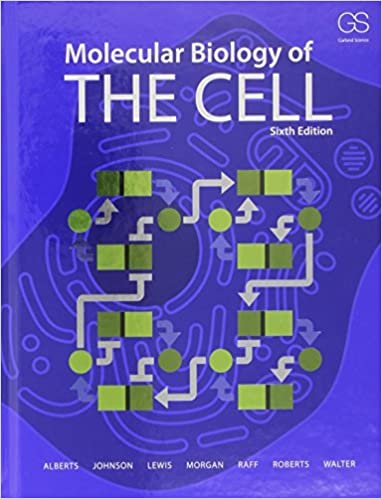
Molecular Biology Of The Cell 6th Edition by Bruce Alberts, Alexander Johnson, Julian Lewis, David Morgan, Martin Raff, Keith Roberts, Peter Walter
Edition 6ISBN: 978-0815345244
Molecular Biology Of The Cell 6th Edition by Bruce Alberts, Alexander Johnson, Julian Lewis, David Morgan, Martin Raff, Keith Roberts, Peter Walter
Edition 6ISBN: 978-0815345244 Exercise 2
Which statements are true? Explain why or why not.
-1 The Tasmanian devil, a carnivorous Australian marsupial, is threatened with extinction by the spread of a fatal disease in which a malignant oral-facial tumor interferes with the animal's ability to feed. You have been called in to analyze the source of this unusual cancer. It seems clear to you that the cancer is somehow spread from devil to devil, very likely by their frequent fighting, which is accompanied by biting around the face and mouth. To uncover the source of the cancer, you isolate tumors from 11 devils captured in widely separated regions and exam- ine them. As might be expected, the karyotypes of the tumor cells are highly rearranged relative to that of the wild-type devil (Figure Q20-3). Surprisingly, you find that the karyotypes from all 11 tumor samples are very similar. Moreover, one of the Tasmanian devils has an inversion on chromosome 5 that is not present in its facial tumor. How do you suppose this cancer is transmitted from devil to devil? Is it likely to arise as a consequence of an infection by a virus or microorganism? Explain your reasoning.
-1 The Tasmanian devil, a carnivorous Australian marsupial, is threatened with extinction by the spread of a fatal disease in which a malignant oral-facial tumor interferes with the animal's ability to feed. You have been called in to analyze the source of this unusual cancer. It seems clear to you that the cancer is somehow spread from devil to devil, very likely by their frequent fighting, which is accompanied by biting around the face and mouth. To uncover the source of the cancer, you isolate tumors from 11 devils captured in widely separated regions and exam- ine them. As might be expected, the karyotypes of the tumor cells are highly rearranged relative to that of the wild-type devil (Figure Q20-3). Surprisingly, you find that the karyotypes from all 11 tumor samples are very similar. Moreover, one of the Tasmanian devils has an inversion on chromosome 5 that is not present in its facial tumor. How do you suppose this cancer is transmitted from devil to devil? Is it likely to arise as a consequence of an infection by a virus or microorganism? Explain your reasoning.

Explanation
The statement "the oncogene products in ...
Molecular Biology Of The Cell 6th Edition by Bruce Alberts, Alexander Johnson, Julian Lewis, David Morgan, Martin Raff, Keith Roberts, Peter Walter
Why don’t you like this exercise?
Other Minimum 8 character and maximum 255 character
Character 255


